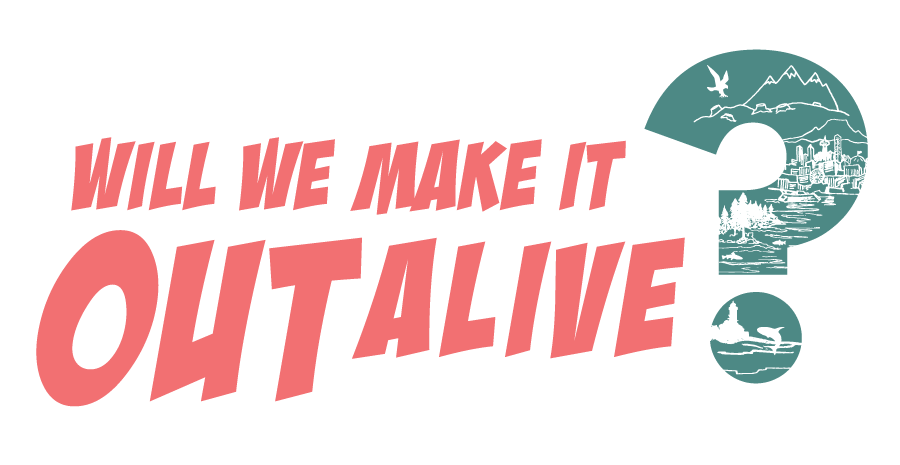Episode 5: What Makes the Songbird Sing?
/In this episode we talk about songbirds and umbrellas, the story of sage grouse conservation, how the Audubon Society’s Sagebrush Songbird Survey program uses GIS, and another opportunity for you to count birds.
A special thank you to Christi Norman, program director of Audubon Washington, for information provided. We also depended on the Sage Grouse Initiative website for a lot of study facts and figures and a High Country News article, The Endangered Species Act’s Biggest Experiment.
The Poop Detective starts us off by waxing poetic about the sagebrush ecosystem, specifically that which is located in eastern Washington and parts of Oregon. We explain sagebrush obligate species.
We then discuss the sage grouse and its mating habits, and talk about why these species are at risk. We reference an article from High Country News.
Because of the Sage Grouse’s particularities, they are a good indicator species for the overall health of the sagebrush ecosystems and the 350 other species that are dependent upon that ecosystem. They also have a huge, specific ecosystem range, which complicate the protection of the species. We also talk about the fact that it has never been listed as endangered.
Oddly enough, this may have actually helped in their conservation! In 2015, US F&W decided that listing the sage grouse on the endangered species list was unwarranted.
Is this a pygmy rabbit? It’s small and cute!
In sad news for science and endangered species everywhere, on July 19, 2018, the administration proposed to limit the power of the ESA in several ways. In late 2018 they also announced plans to roll back existing protections of the sage grouse by opening several protected areas to development. We shared Mark Rupp’s response, and he references some polling data.
The sage grouse was slated for reevaluation for listing on the endangered species act in 2020, but we will see what happens under the current administration.
We talk about how the Sage Grouse Initiative aims to manage to protect multiple species with different habitat requirements including other songbirds like the Brewer’s Sparrow (listen to its song and learn more!).
Amy drops more facts about how the Sage Grouse is an umbrella species. Jen may have snoozed a bit until Amy mentioned songbird maps.
We then started to switch gears to talk about a huge multi-year survey that eight Eastern Washington chapters of the Audubon Society took on as a group effort - the Sagebrush Songbird Survey project. This project is a partnership between the Washington Department of Fish and Wildlife (WDFW) and the Audubon Society. The goals of the project were to verify the accuracy of GIS mapping efforts and species models, track sagebrush songbird distribution in Eastern Washington, and collect information that would guide conservation efforts in the future. The Magical Mapper was excited to tell everyone how they used GIS on this project, because they used it in multiple phases of the project. The Audubon Society even teamed up with Esri!
Most of the data from the survey is publicly available on eBird, although in the final year of the survey some private lands are being opened up to volunteers, and this information will be vetted and go into the WDFW Priority Habitat and Species database.
For our citizen science segment, we talk about how the Audubon Society is looking for a few good cats, I mean volunteers, (at least 125 to be exact) to participate in the final year of the survey. There are a few requirements to be a volunteer, including attending training in March/April. You can see when the training is and RSVP to the coordinators on the project website. There are also many resources on the website so you can see what you’re signing up for before committing.
For fun, we asked Christi Norman if the Sagebrush Steppe of Eastern Washington was a good place to hide out during a zombie apocalypse. She said:
“It’s good as long as you don’t need much water, love a starry night, and are short enough to hang in the shade of the sagebrush in the summer heat. The rocks are pretty rough so you need an unlimited number of super-duper hiking boots –or perhaps a hoof adaptation. In the event of the catastrophic wildland fires wings would be helpful to fly away.”
If you’re a teacher, you can check out this sagebrush curriculum, which was developed by US Fish and Wildlife.
As always, thank you so much for visiting, and please subscribe to our podcast. We’re now on all of the major podcast platforms, including Apple Podcasts, Stitcher, Google Play Music, and TuneIn. We’d appreciate it if you’d rate and review us, especially on Apple Podcasts (we’re trying to get into New and Noteworthy, so everything helps)! You’re the coolest cats around!


